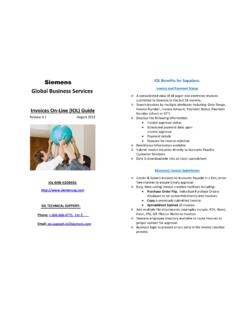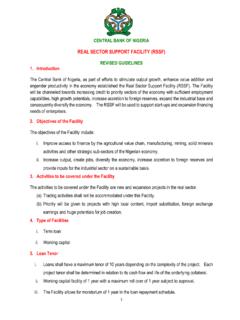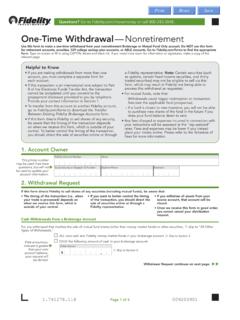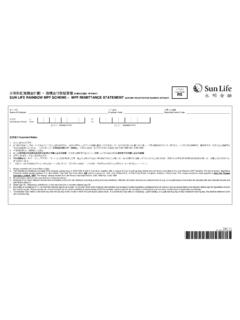Transcription of Closing Cycle Best Practices - American Institute of ...
1 Closing Cycle Best Practices [Content adapted from the 2013 AICPA course, Redefining the Close Process, chapter 6. AICPA, 2013-14]] 2014. AICPA. All Rights Reserved Table of Contents Introduction Readiness to Transition to the Soft Close Best Practices When Transitioning to a Soft Close Best Practices in the Closing and Reporting Cycle Introduction Is the hard monthly close really necessary? The monthly close creates incredible costs in time and resources for most companies. At least one week is devoted to aggregating the numbers, one week to analyzing the results, one week to distributing the reports, and then it is time to prepare for the next month s close. A soft close allows an organization to tailor the numbers reported on a monthly basis to its key performance indicators. The soft close eliminates (or uses estimates for) a host of accrual, allocation, reconciliation, contingency, and reserve accounting entries.
2 The need for monthly GAAP-based, regulatory compliant financial statements is called into question. The benefits of the soft close are impressive: the finance function provides monthly information that is more current and better analyzed. Finance personnel have more time to research what is going on and to anticipate future trends. Because of the currency and accuracy of the information, if there is a variance, finance does not just demand an explanation. The finance function, in conjunction with operating partners, can identify the root cause, re-evaluate processes, and reset operating targets. To move from the traditional close model to the soft close, implement the following changes: Redefine the elements of the Closing Cycle . o Decide which activities can be eliminated, which deferred until a quarterly or annual close, and which moved outside the close period.
3 O Allow time-related accruals to flow through subsystems naturally. Accrue only when material, and at quarterly or annual periods. o Move the forecasting process away from the close Cycle . o Move cost allocations off the monthly close by using fixed rates, budgeted rates, or prior month. Normally variances are insignificant. Eliminate interim cycles. Eliminate extra cycles of report production and distribution. Focus on the gross changes from month to month rather than a small number of postings that might have been done the night before. Collapse the level of detail. Post allocation to a single division-level cost center instead of to every cost center within a division. 2 Best Practices in the Closing Cycle Raise the materiality level. Make only those inter-company, cross-country consolidations, and elimination entries that have high materiality to the corporation and eliminate those material only to divisions.
4 Separate and integrate systems. Make the cost-accounting and billing system independent of the general ledger. Integrate the information systems functions of the close process. Readiness to Transition to the Soft Close Moving to a soft close requires the adoption of a continuous improvement effort in which each of the subordinate processes are evaluated and performance measures are established and tracked. The first step is to analyze what causes delays in the Closing process: wait times, aggregation activities, application of GAAP recognition and measurement rules, review and approval processes, corrections, and re-entries. Use the status test below in Box 1 to determine if your current Closing process includes time-consuming elements. Box 1: Current Close Status Test Does your Closing process include any of the following? Unnecessarily complex calculations Poor data quality Manual processing of routine transactions Redundant inputs of data Re-keying of corrected data Manual processing of recurring journal entries Allocations deferred until close information reviewed Initial accounting treatment determined after month-end Receivables and payable held open for late transactions Reconciliations must be completed during close process and before reports issued Manual update and comparisons of current activity to prior month and to budget Multiple review and approval cycles The next step is to determine if there is systems and transaction reliability that can support a soft close.
5 Subordinate processes should be evaluated against readiness criteria 3 2014. AICPA. All Rights Reserved established by the finance redesign program. The following information should be available and compared to designated benchmark partners: Transaction system readiness Availability of feeder information All feeders identified Feeder postings scheduled and monitored Feeders analyzed as they are posted Management requirements for feeders and time intervals tracked Variance of key performance indicators from actual results Feeder errors identified and monitored Root cause analysis completed Corrective action executed and monitored Performance measure availability Availability of key performance indicators Variance of KPIs from actual results Number of days from business unit general ledger feeder cut-offs to prepare management reports Customer perceptions of timeliness of information Analysis of cost as a percent of total process cost Number of adjustments required to complete close Cycle Performance measures for close Cycle Number of days
6 From initial feeder cut-off to flash results Number of changes to initial results Number of days from initial close to final close Number of days from final close to management information reports Variances of KPIs from actual results Process costs as a percent of revenue Ratio of elimination entries to total entries 4 Best Practices in the Closing Cycle Ratio of adjusting entries to total entries Organization readiness Adherence to defined Closing Cycle procedures Adherence to Closing Cycle schedule Elimination of root cause problems Tracking of feeder system performance Reporting complexity Availability of KPIs during the month Number of errors in feeder postings Number of days to prepare management reports Customer perceptions of timeliness of information Customer perceptions of value and reliability of reports Inter-unit transactions as percent of total entries Best Practices When Transitioning to a Soft Close Moving from a hard close to a soft (fast) close is not a 100 percent redesign of the finance function.
7 Incremental processing improvements can be implemented within the Closing Cycle a series of 1 percent improvements that together aggregate to the 40 to 60 reduction of Cycle time and refocus of efforts that can be achieved. This section discusses the best Practices in the feeder systems into the Closing processes that have resulted in significant changes in finance function performance. For each area a wide variety of best Practices are illustrated. Those that have the most significant effect on the Closing Cycle are discussed in detail. To facilitate the integration and coordination of the finance function redesign efforts with process improvements that may have to be pushed out to operating units, the discussion is summarized around three operating cycles: procurement/disbursements, revenues/receipts, and administration/reporting. Best Practices in the Procurement/Disbursements Cycle The procurement/disbursements Cycle is the most labor-intensive of all the finance functions, and therefore, is an excellent source of improvements in Closing Cycle costs and time.
8 Best Practices fall into two categories: reduction of the numbers of steps in the process; elimination of the number of errors in the process. If the number of documents subject to matching, approval, and review is reduced and if the automatic processes followed by periodic audits are substituted for the current process flow, the speed, and accuracy of information available for the close is improved. In summary, world class finance functions utilized the following methods: 5 2014. AICPA. All Rights Reserved accounts payable Audit expense reports Automate expense reporting Automate payments for repetitive invoicing Automate three-way matching Automate approval process Centralize the accounts payable function Create direct purchase interfaces to suppliers Digitize accounts payable documents; document-enabled transaction system Directly enter receipts into computer Eliminate manual checks Fax transmission of accounts payable documents Issue standard account code list Link supplier requests to the accounts payable database Outsource the accounts payable department or portions such as transportation Pay based on receiving approval only Record payables from a purchase order/estimate charges before month-end Receive billings through EDI Reduce required approvals Shrink the supplier base Substitute petty cash for checks Substitute wire transfers for checks Use stored value cards Transmit expense reports by e-mail Use blanket purchase orders Use procurement cards Use a signature stamp 6 Best Practices in the Closing Cycle Internet-based monitoring of credit card purchases Link corporate
9 Travel policies to an automated expense reporting system Shift incoming billings to an EDI data-entry supplier Use negative assurance for invoice approvals Have suppliers include their supplier numbers on invoices Request suppliers enter invoices through a website Eliminate cash advances for employee travel Withhold first payment until W-9 is received Have regularly scheduled check-signing meetings Incorporate copy-protection feature into checks Issue ACH payments with remittance detail Create online purchasing catalog Add supplier 800 numbers to master file A labor-intensive task for finance personnel is the review and approval of every item on employee expense reports, comparing everything to company policy for allowable travel and entertainment expenses, and then contacting employees regarding inconsistencies prior to issuing a check.
10 The solution is to replace total review of all expense reports with an occasional audit. The audit usually results in a list of common expense reporting problems that are corrected by employee education, and ongoing audits of employees with habitual accuracy or abuse problems. As a best practice alternative, automate to an online expense reporting system with built in approvals of listed expenses, notification of the need for back-up documentation, a tracking transmittal number, e-mail distribution for approval by supervisor and finance, and wire transfer of funds to the employee based on the approved online expense report. payable processes are by nature repetitive. Automate recurring processes and edit checks in order to improve accuracy. The improved information quality can eliminate the need to hold the close process open. End of period adjustments are allowed to roll-through on a normal Cycle , or, based on more accurate data, are estimated based on prior period actual.




